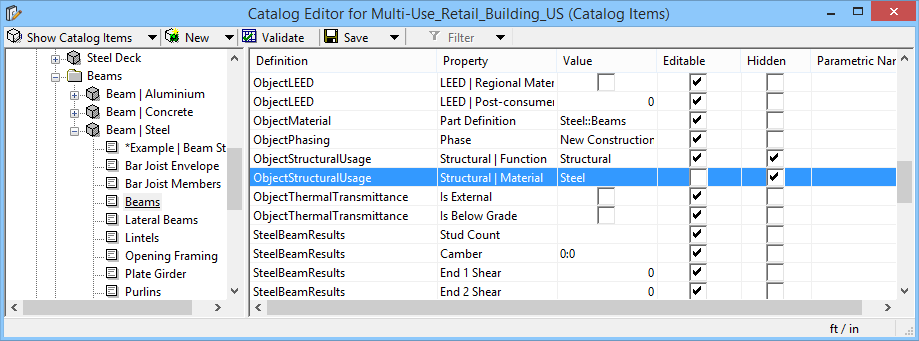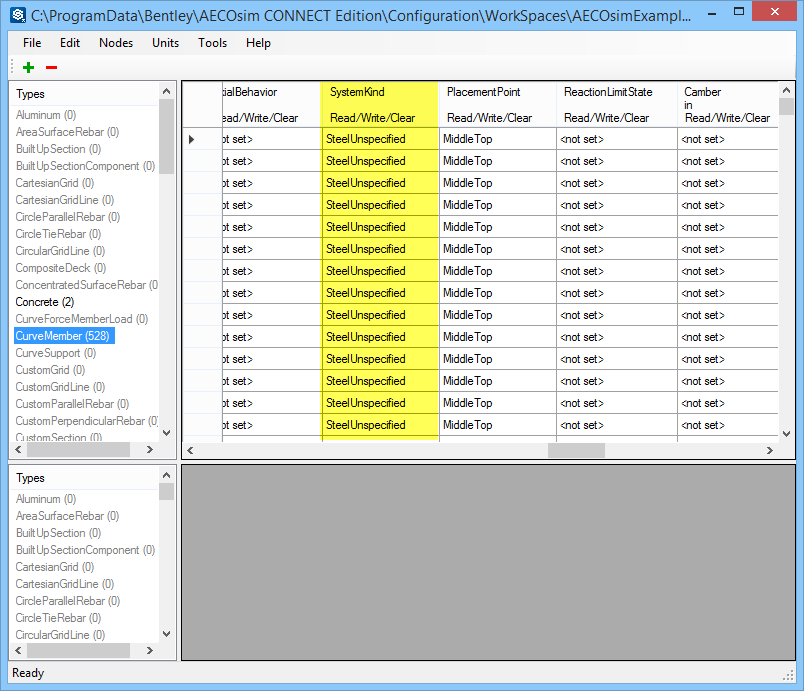Export Material Mapping
The Structural Synchronizer link's material mapping uses the DataGroup System property ObjectStructuralUsage:StructuralMaterial (if present) when setting the ISM material type (Steel, Concrete). If the Structural element does not have DataGroup System instance data, the Structural extended default data material is used.
The following are the mappings between DataGroup System (and Structural extended data materials) and ISM.
The Structural extended data material Grade property determines the ISM material name.
Wall materials
Wall materials are mapped to Structural Synchronizer materials. The same logic applies to Walls as Linear Members, etc. The material (DataGroup System or Structural material name) determines the ISM material type (Steel, Concrete). The Structural extended data Grade property (or the default material grade) determines the ISM material name.
ISM SystemKind Property
Structural Synchronizer supports a property for CurveMembers (Structural Linear Members) that conveys some additional information about the role of the member in the structural model. OpenBuildings Designer assigns the SystemKind property for newly created curve members.
The SystemKind property is in addition to the ISM Use property (Beam, Column). It is assigned only to new members that do not exist in the repository. The values of existing SystemKind properties are not modified.
The property is set based on the material type (Steel, Concrete, Steel Joist):



